Yuji Yang
Gaussian-Informed Continuum for Physical Property Identification and Simulation
Jun 21, 2024Abstract:This paper studies the problem of estimating physical properties (system identification) through visual observations. To facilitate geometry-aware guidance in physical property estimation, we introduce a novel hybrid framework that leverages 3D Gaussian representation to not only capture explicit shapes but also enable the simulated continuum to deduce implicit shapes during training. We propose a new dynamic 3D Gaussian framework based on motion factorization to recover the object as 3D Gaussian point sets across different time states. Furthermore, we develop a coarse-to-fine filling strategy to generate the density fields of the object from the Gaussian reconstruction, allowing for the extraction of object continuums along with their surfaces and the integration of Gaussian attributes into these continuums. In addition to the extracted object surfaces, the Gaussian-informed continuum also enables the rendering of object masks during simulations, serving as implicit shape guidance for physical property estimation. Extensive experimental evaluations demonstrate that our pipeline achieves state-of-the-art performance across multiple benchmarks and metrics. Additionally, we illustrate the effectiveness of the proposed method through real-world demonstrations, showcasing its practical utility. Our project page is at https://jukgei.github.io/project/gic.
M2GNN: Metapath and Multi-interest Aggregated Graph Neural Network for Tag-based Cross-domain Recommendation
Apr 16, 2023Abstract:Cross-domain recommendation (CDR) is an effective way to alleviate the data sparsity problem. Content-based CDR is one of the most promising branches since most kinds of products can be described by a piece of text, especially when cold-start users or items have few interactions. However, two vital issues are still under-explored: (1) From the content modeling perspective, sufficient long-text descriptions are usually scarce in a real recommender system, more often the light-weight textual features, such as a few keywords or tags, are more accessible, which is improperly modeled by existing methods. (2) From the CDR perspective, not all inter-domain interests are helpful to infer intra-domain interests. Caused by domain-specific features, there are part of signals benefiting for recommendation in the source domain but harmful for that in the target domain. Therefore, how to distill useful interests is crucial. To tackle the above two problems, we propose a metapath and multi-interest aggregated graph neural network (M2GNN). Specifically, to model the tag-based contents, we construct a heterogeneous information network to hold the semantic relatedness between users, items, and tags in all domains. The metapath schema is predefined according to domain-specific knowledge, with one metapath for one domain. User representations are learned by GNN with a hierarchical aggregation framework, where the intra-metapath aggregation firstly filters out trivial tags and the inter-metapath aggregation further filters out useless interests. Offline experiments and online A/B tests demonstrate that M2GNN achieves significant improvements over the state-of-the-art methods and current industrial recommender system in Dianping, respectively. Further analysis shows that M2GNN offers an interpretable recommendation.
Long Short-Term Preference Modeling for Continuous-Time Sequential Recommendation
Aug 01, 2022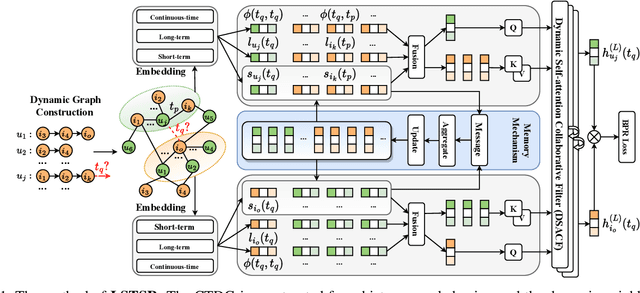

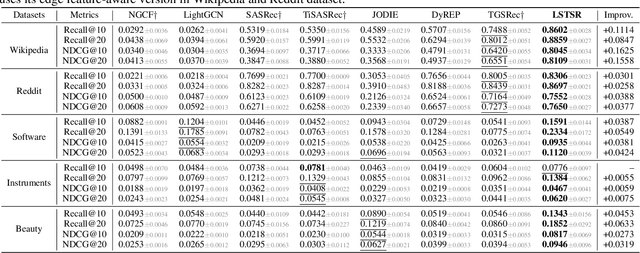
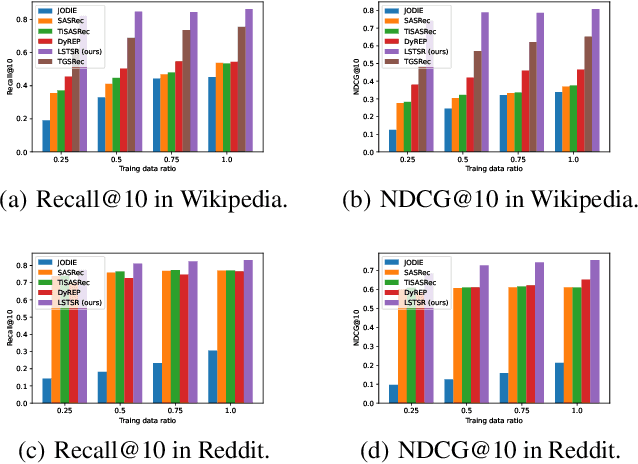
Abstract:Modeling the evolution of user preference is essential in recommender systems. Recently, dynamic graph-based methods have been studied and achieved SOTA for recommendation, majority of which focus on user's stable long-term preference. However, in real-world scenario, user's short-term preference evolves over time dynamically. Although there exists sequential methods that attempt to capture it, how to model the evolution of short-term preference with dynamic graph-based methods has not been well-addressed yet. In particular: 1) existing methods do not explicitly encode and capture the evolution of short-term preference as sequential methods do; 2) simply using last few interactions is not enough for modeling the changing trend. In this paper, we propose Long Short-Term Preference Modeling for Continuous-Time Sequential Recommendation (LSTSR) to capture the evolution of short-term preference under dynamic graph. Specifically, we explicitly encode short-term preference and optimize it via memory mechanism, which has three key operations: Message, Aggregate and Update. Our memory mechanism can not only store one-hop information, but also trigger with new interactions online. Extensive experiments conducted on five public datasets show that LSTSR consistently outperforms many state-of-the-art recommendation methods across various lines.
Ensemble Multi-Relational Graph Neural Networks
May 24, 2022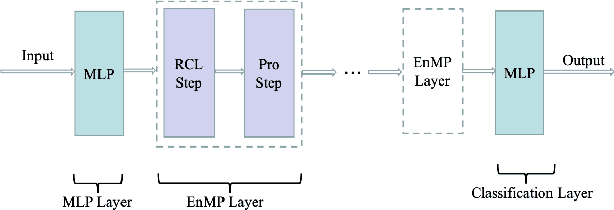
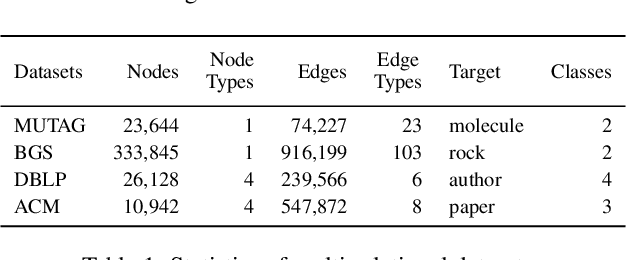


Abstract:It is well established that graph neural networks (GNNs) can be interpreted and designed from the perspective of optimization objective. With this clear optimization objective, the deduced GNNs architecture has sound theoretical foundation, which is able to flexibly remedy the weakness of GNNs. However, this optimization objective is only proved for GNNs with single-relational graph. Can we infer a new type of GNNs for multi-relational graphs by extending this optimization objective, so as to simultaneously solve the issues in previous multi-relational GNNs, e.g., over-parameterization? In this paper, we propose a novel ensemble multi-relational GNNs by designing an ensemble multi-relational (EMR) optimization objective. This EMR optimization objective is able to derive an iterative updating rule, which can be formalized as an ensemble message passing (EnMP) layer with multi-relations. We further analyze the nice properties of EnMP layer, e.g., the relationship with multi-relational personalized PageRank. Finally, a new multi-relational GNNs which well alleviate the over-smoothing and over-parameterization issues are proposed. Extensive experiments conducted on four benchmark datasets well demonstrate the effectiveness of the proposed model.
 Add to Chrome
Add to Chrome Add to Firefox
Add to Firefox Add to Edge
Add to Edge